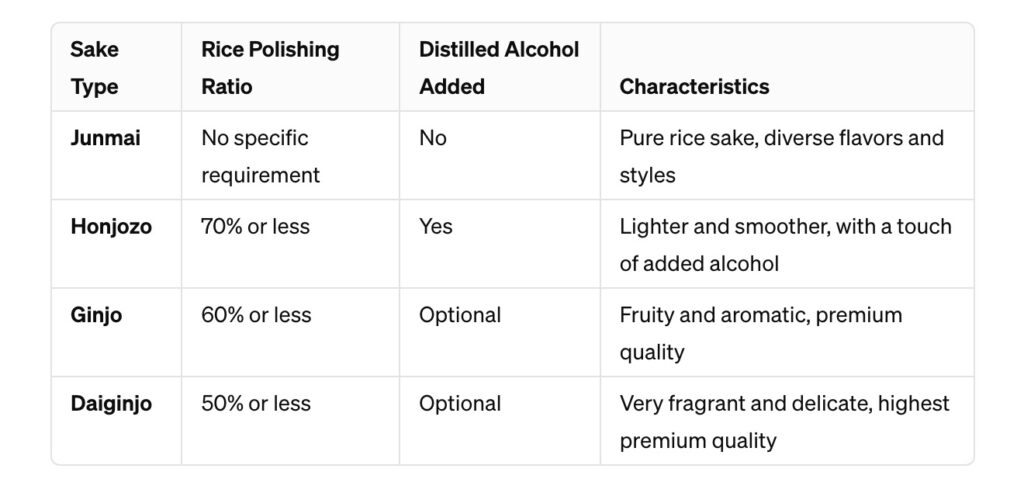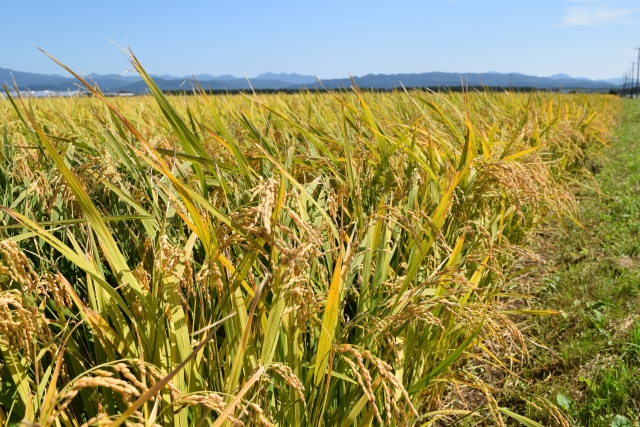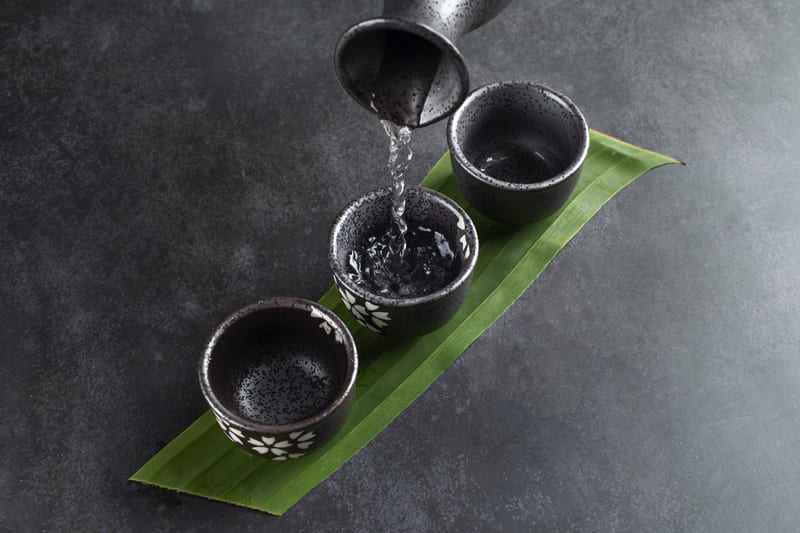
Welcome to a journey into the heart of Japanese culture through the lens of one of its most esteemed treasures: Junmai sake. Whether you're new to the world of sake or looking to deepen your appreciation, this guide is designed to unravel the mysteries of Junmai sake, offering insights into its unique qualities, significance, and how to enjoy it to the fullest.
What is Junmai Sake?
Junmai sake, a term that resonates with purity and tradition, represents sake in one of its most authentic forms. But what exactly makes it stand out in the vast world of Japanese sake?
The Definition and Criteria of Junmai Sake
Junmai sake is defined by its composition—pure rice wine, without the addition of distilled alcohol. This category requires that the brew be made from rice, water, koji mold, and yeast only, emphasizing the quality of the rice and the skill of the sake brewer.
* "Junmai" meaning "pure rice"
The Historical Context of Junmai Sake
Tracing its origins back to the early days of sake brewing, Junmai sake was the standard until the 20th century when brewers started adding distilled alcohol to alter flavor and increase yield. Today, Junmai sake has seen a resurgence, celebrated for its depth of flavor and traditional brewing methods.
The Special Position of Junmai Sake in the Sake World

Junmai sake holds a revered spot in the array of Japanese sake types, each distinguished by rice polishing ratios and brewing techniques.
Comparing Junmai with Other Sake Types
- Junmai Sake: No added alcohol, rice polishing ratio varies, rich and full-bodied.
- Honjozo: A small amount of distilled alcohol added, at least 70% rice polishing ratio, lighter and smooth.
- Ginjo and Daiginjo: Higher rice polishing ratios (at least 60% and 50%, respectively), with or without added alcohol, known for their fragrant and delicate flavors.
Understanding Rice Polishing Ratio
The rice polishing ratio indicates how much of the outer layer of the rice grain is removed before brewing. Lower ratios mean more of the grain is polished away, leading to finer, often more fragrant sake. Junmai sake can come in various polishing ratios, offering a wide range of flavors and textures.
The Diversity Within Junmai Sake

When exploring the world of Junmai sake, it's fascinating to discover that this category itself harbors a variety of subtypes, each with its own unique characteristics and appeal. These distinctions are primarily based on the rice polishing ratio and specific brewing methods, which contribute to the sake's final flavor profile and quality. Let's delve into three notable types of Junmai sake: Junmai Ginjo, Junmai Daiginjo, and Tokubetsu Junmai.
Junmai Ginjo Sake: The Aromatic Elegance
What Makes Junmai Ginjo Special?
Junmai Ginjo sake is a premium category that requires the rice to be polished to at least 60%, meaning no more than 60% of the original grain size remains. This extensive polishing process removes more of the outer layers of the rice, resulting in a sake with a more refined, often fruity and floral flavor profile. Junmai Ginjo is brewed using special yeast and fermentation techniques that enhance its aromatic qualities, making it a favorite among those who appreciate a more nuanced and delicate sake experience.
How to Enjoy Junmai Ginjo
Junmai Ginjo is best enjoyed chilled to preserve its complex aromas and flavors. It pairs wonderfully with light dishes such as sushi, sashimi, or even salads that complement its delicate nature without overpowering it.
Junmai Daiginjo Sake: The Pinnacle of Purity
The Zenith of Junmai Sake
Junmai Daiginjo represents the highest echelon of sake brewing, with rice grains polished down to at least 50% of their original size. This intense focus on the quality and purity of the rice results in a sake that is even more aromatic and refined than Junmai Ginjo. Junmai Daiginjo sakes are the product of painstaking craftsmanship, often with a silky texture and complex, layered flavors that can include notes of ripe fruit, flowers, and even hints of herbs or spices.
Savoring Junmai Daiginjo
This type of sake is a true luxury, meant to be sipped and savored, preferably chilled to slightly below room temperature. Its exquisite balance and depth make it an ideal companion to sophisticated dishes or as a standalone treat for a special occasion.
Tokubetsu Junmai Sake: A Distinctive Delight
What Distinguishes Tokubetsu Junmai?
Tokubetsu Junmai, translating to "special pure rice" sake, is a category that offers brewers more flexibility. It indicates a sake that is exceptional or unique in some way, often because of a higher rice polishing ratio than standard Junmai, the use of a particular rice type, or a distinctive brewing method. While the specifics can vary, Tokubetsu Junmai sakes generally offer a rich and full-bodied flavor profile, with a depth and complexity that reflects their special status.
Experiencing Tokubetsu Junmai
Tokubetsu Junmai is versatile in terms of serving temperature, making it enjoyable warm, at room temperature, or chilled, depending on the specific characteristics of the sake and personal preference. It pairs excellently with a wide range of dishes, from grilled fish and meats to flavorful vegetable preparations, showcasing its robustness and adaptability.
The Characteristics and Allure of Junmai Sake

Junmai sake is celebrated for its versatility and the pure expression of rice flavor. But what exactly sets it apart?
The Flavor Profile of Junmai Sake
Junmai sake is known for its full-bodied taste and higher acidity compared to other types of sake. It often features rich, umami flavors that pair excellently with a wide range of foods.
The Best Ways to Enjoy Junmai Sake
- Temperature: Junmai sake can be enjoyed warm, at room temperature, or chilled, depending on the specific type and your personal preference.
- Pairing: Its robustness makes it ideal for pairing with hearty dishes, including grilled meats and savory stews.
Junmai sake, crafted exclusively from rice and water, embodies a purity that harmonizes beautifully with a wide array of dishes. This natural composition makes it an exceptionally versatile companion to meals, adept at enhancing flavors rather than overpowering them.
Junmai Sake: A Culinary Companion
Thanks to its rice-derived essence, Junmai sake pairs seamlessly with foods that share a similar base ingredient, making it a quintessential choice for dining. Its compatibility ranges from simple rice dishes to more elaborate meals, offering a balanced and enriching dining experience. Whether you're enjoying a home-cooked meal or dining out, incorporating Junmai sake into your culinary exploration can elevate the flavors and your overall enjoyment of the meal. Its role as a "mealtime sake" or "dining sake," or beverage for mealtime is unparalleled, making every bite and sip a delightful journey through taste and tradition.
Junmai Sake FAQ
Is Junmai Sake More Expensive Than Other Types?
Not necessarily. The price of Junmai sake can vary widely based on the brewery, region, and rice polishing ratio. There are excellent Junmai sakes available at various price points.
Can Junmai Sake Be Aged?
Yes, some Junmai sake is suitable for aging, which can develop deeper, more complex flavors over time. However, most sake is best enjoyed within a year or two of purchase.
How Should I Store Junmai Sake?
Keep it in a cool, dark place. Once opened, it's best to consume it within a few weeks, storing the bottle in the refrigerator to maintain its freshness.
